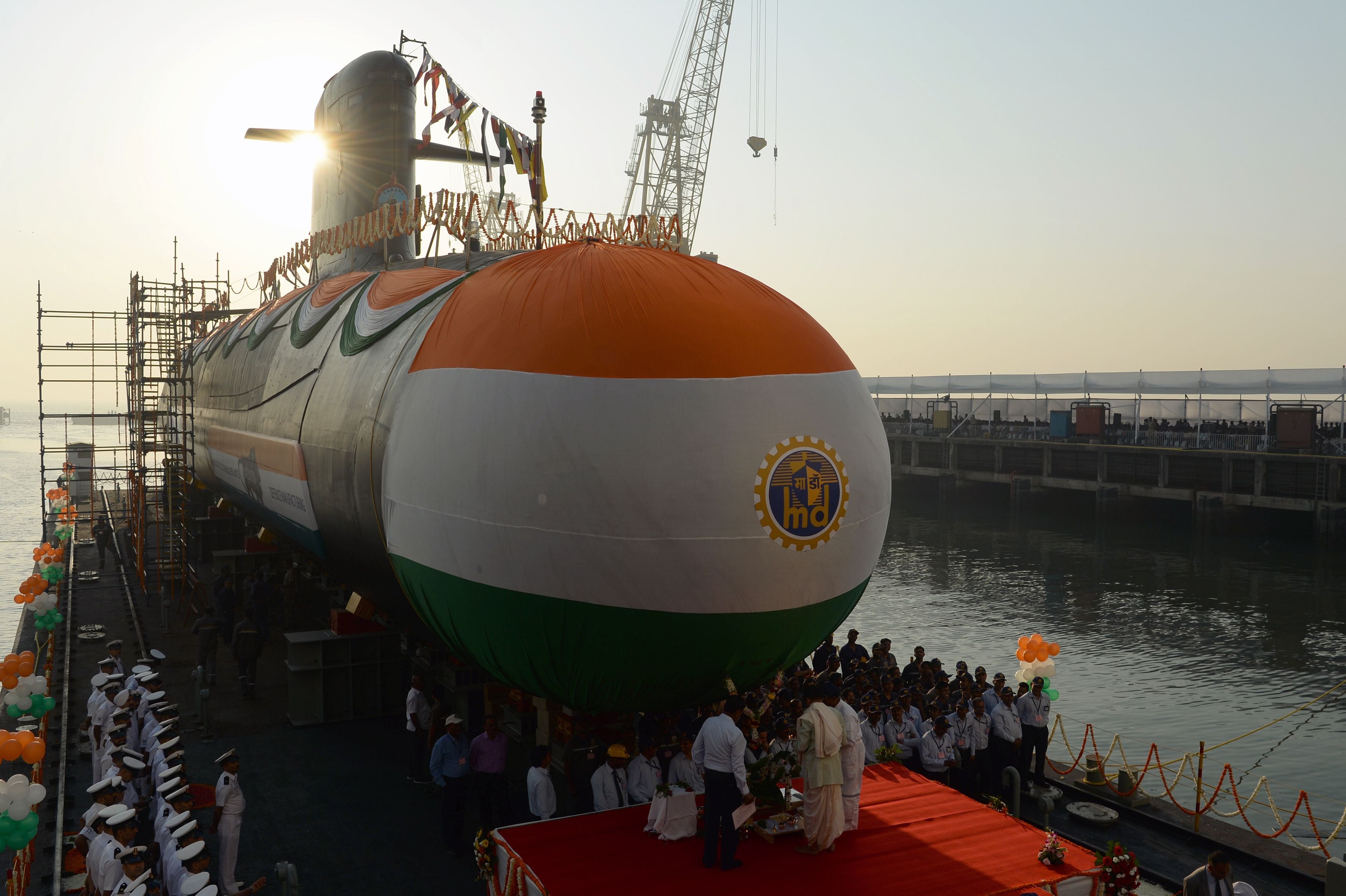NEW DELHI — The Indian Navy is unlikely to meet its goal of having a 175-ship fleet in the next five years due to a lack of funds and the government’s preference to award contracts to state-owned shipyards over private businesses, service officials have told Defense News.
The goal, set in December 2019, was already lowered from 200 ships after the government allocated less funding than the Navy expected.
Both serving and retired Navy officials have expressed concern that the domestic shipbuilding industry cannot thrive in an environment where the government favors state-owned shipyards for building critical naval platforms, including aircraft carriers, destroyers, frigates and anti-submarine warfare corvettes — projects that are already fraught with delays or additional costs.
The Navy operates a 130-ship fleet, and 39 vessels are currently on order or under construction. The service spends about $1.5 billion annually on shipbuilding programs, but officials say that is not enough and should be increased threefold to meet the shortfall in capability.
“The Ministry of Defence in the past has always given preference to state-owned shipyards by nominating them for all big-ticket shipbuilding programs, and private shipbuilders continue to suffer due to a lack of orders,” one Navy official told Defense News.
A source at the MoD said the government allocated about $15.28 billion over 10 years for the construction of 50 ships (39 are on order or under construction, and 11 were already delivered).
Some sources spoke to Defense News on the condition of anonymity, as they were not authorized to speak to the media.
RELATED

Only three naval contracts worth a total of $71.42 million were awarded to private players, the defense official added, with the remaining 47 projects awarded to state-owned shipyards.
Of the 50 ships, 40 are meant for the Navy and 10 for the Indian Coast Guard.
“Warship building as an industry in the country has been on the downswing for over a decade now,” former Indian Navy chief Adm. Sunil Lanba told Defense News.
The shipbuilding division of private company Larsen & Toubro successfully completed a floating dock program for the Navy and built offshore patrol vessels and interceptor boats for the Coast Guard. But financial problems led to the cancellation of other maritime projects, including one to construct training ships by Bharati Shipyard and another to build offshore patrol vessels by Reliance Naval (previously known as Pipavav Shipyard).
Reliance Naval stopped production operations in December 2018. Last month, asset management firm Hazel Mercantile Limited was declared the highest bidder at $385.71 million for the financially strapped shipyard.
Government-backed National Asset Reconstruction Company Limited made the announcement Dec. 13, although the bid from Indian business tycoon Nikhil Merchant was not approved by press time. He owns a liquefied natural gas terminal at Jafrabad Port near the R-Naval facilities, and it’s unclear what he would do with the newly acquired facility.
United Shipbuilding Corporation of Russia had shown interest in buying out R-Naval’s assets but withdrew from the process in mid-2021, citing the unviable shipbuilding business in India.
Private players ABG Shipyard and Bharati Shipyard were also forced to eventually shut down operations after declaring bankruptcy. However, L&T and Shoft Shipyard — the latter of which primarily serves as a subcontractor to state-owned shipyards — have survived.
Private shipbuilders have managed to deliver 101 vessels to the Indian Coast Guard over the past 20 years. During that time period, only 62 small auxiliary vessels were delivered by state-owned shipyards.
In contrast, state-owned shipyards delivered 59 large ships to the Navy in the past two decades; private shipyards have not been awarded any big-ticket large ship programs since 2001.
“The continued nominations and extremely aggressive bidding for competitive programs by state-owned shipyards is a cause for concern,” Jayant Damodar Patil, an L&T board member and chief of its defense business, told Defense News.
Patil said government funding is available for establishing or modernizing facilities for state-owned yards, whereas private yards must use their own capital. Furthermore, he said, private yards must include in their bids the cost of investing in new shipbuilding efforts, but state-owned shipyards do not need to do so.
“The state-owned shipyards continue to enjoy government preference and continue to secure competitively bid naval projects on undervalued costs to eliminate private players from competition. This has resulted in dismal execution of existing warship orders,” said Mukesh Bhargava, an industry analyst and a retired Navy commodore.
The MoD source said for the next five years, the government is dedicating $13.85 billion for new shipbuilding projects. Out of that total, $7.85 billion is reserved for state-owned shipyards, the defense official said, while the remaining $6 billion will likely be pursued through open competition under the public-private partnership model.
That model allows for state-owned shipyards to offload production work to private shipyards.
But even state-owned shipyards are struggling technologically. The naval industrial bases of China, Japan and South Korea have seen the induction of advanced tech, such as 3D printing, machine-learning systems and cyber capabilities. However, Indian counterparts are not on equal footing, according to Bhargava.
“Despite Indian industry also being on the forefront of most of these technologies, state-owned shipyards have not been able to adopt these disruptive and gamechanging processes of digitalization,” he said.
Another MoD official said the government plans to implement new shipbuilding practices and technologies for state-owned shipyards based on requirements for ongoing and future projects to “increase efficiency [and] productivity, and reduce build periods and avoid cost overruns.”
Vivek Raghuvanshi is the India correspondent for Defense News.








